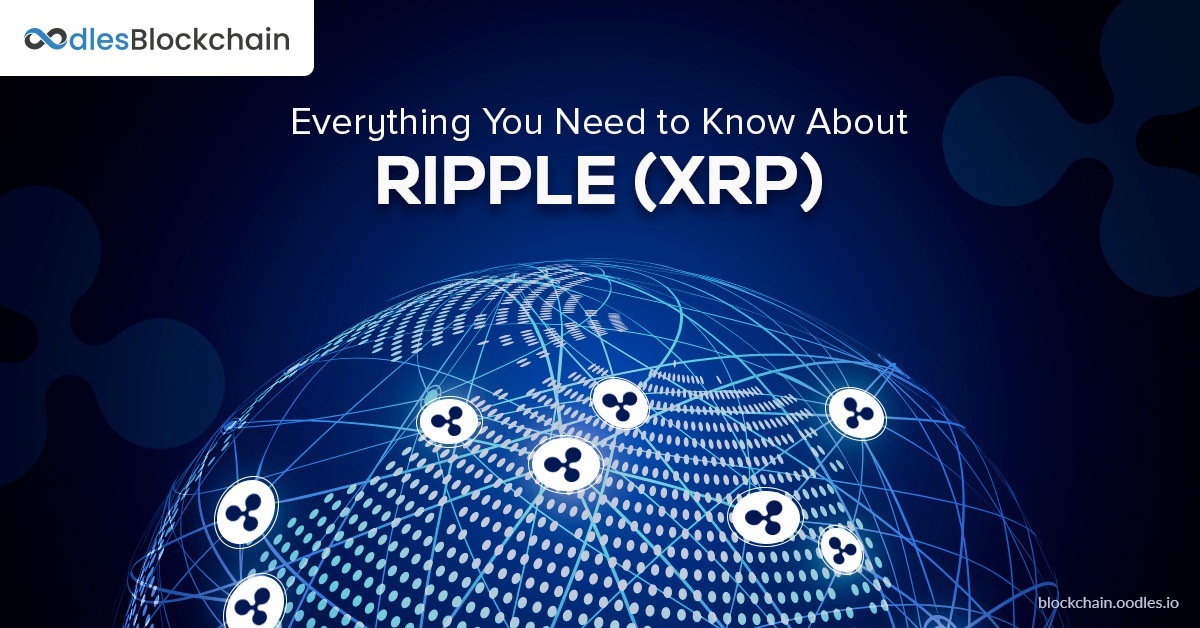-
Ripple's blockchain system, RippleNet is famous for its unique digital payment protocol for cross-border payments. Ripple works on an open-source and peer-to-peer decentralized platform in any form of currency, whether USD, Yen, or Litecoin. Ripple utilizes a method called Gateway that becomes the link in the trust chain between participants wanting to execute a transaction. The Gateway works as the credit mediator that sends and receives currencies to public addresses over the Ripple network. This means, anyone or any entity can get registered and open a gateway, which permits the participant to act as the intermediary for the exchange of currencies, sustaining liquidity, and seamless cross-border payments on the network.
Ripple XRP
The digital currency of Ripple, XRP, serves as a link of currency to other currencies. It does not discriminate between the exchange of one cryptocurrency to another, and thus, simplifies the exchange of any currency to another. Each currency on the ecosystem bears its own gateway, such as CADBluzelle, BTCbitstamp, and USDsnapswap. Keeping your balances on hold with a gateway may expose the user to counterparty risk, the same is apparent in the conventional banking system as well. If the gateway, in any case, fails to consider its IOU (I owe you) or liability, users may not get the value of their money held at that gateway. Users that don't prefer trusting a gateway, could, therefore, use a trusted gateway that in turn collaborates with the 'untrusted' gateway. Subsequently, the IOU will become the creditworthy-certified gateway. Particular distributed nodes determine by consensus which transaction was made first by counting the majority vote. The executions are instant, taking roughly 5 seconds. Since there's no central administration that permits who can install a node and confirm transactions, the Ripple platform can be described as decentralized. Also, read what's the importance of 'Decentralization' in the digital space. RippleNet keeps all information on all IOUs in a given currency for any gateway or user. Transaction flows and IOU credits that arise between Ripple wallets are made available on the Ripple consensus ledger. However, although financial transaction history is publicly available on the blockchain, the data doesn't get linked to any ID or account of any business or individual.
Advantages: Ripple
Ripple enhances a few of the limitations attributed to traditional banks. 'Settlement' time of transactions is in seconds on the Ripple network even if the platform is handling millions of transactions frequently. This is quite different from bank processes, where it takes days or even weeks to complete a wire transfer. The transaction fee on Ripple is also very low, with a standard transaction set at o.oooo1 XRP. This is an extremely low transaction fee when we compare it to the large fee charges placed by traditional banks for conducting cross-border payments.
The Bottom Line:
With partnerships everywhere and firm financial backing, RippleNet (Ripple) is emerging as a major player in the crypto world. It's designed with the aim to fill the gap between the new wave of digital currencies and traditional banking. And, anyone who's ever been extorted while transferring money across the border will agree.

Our Offices
INDIA
Emaar Digital Greens, Sector 61,
Gurugram, Haryana
122011.
Welldone Tech Park,
Sector 48, Sohna road,
Gurugram, Haryana
122018.














